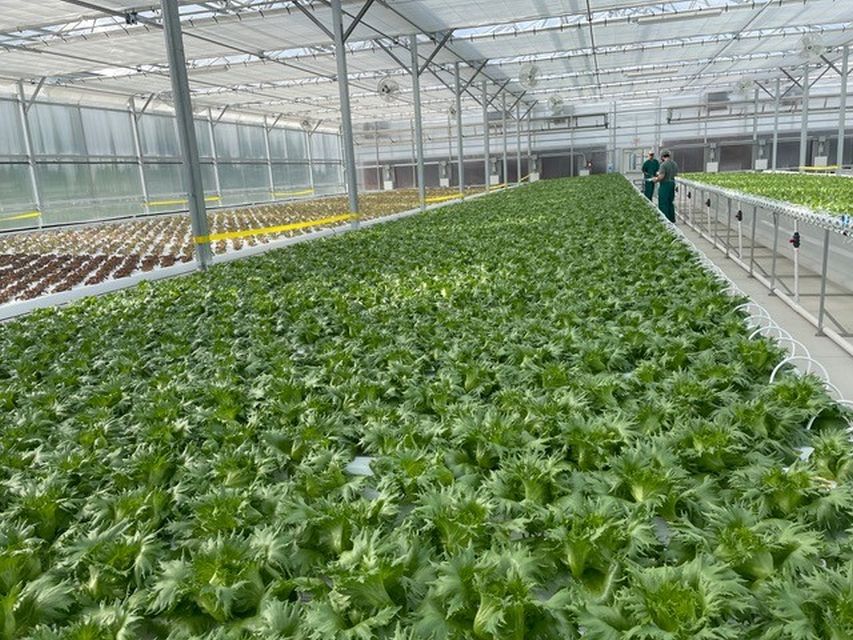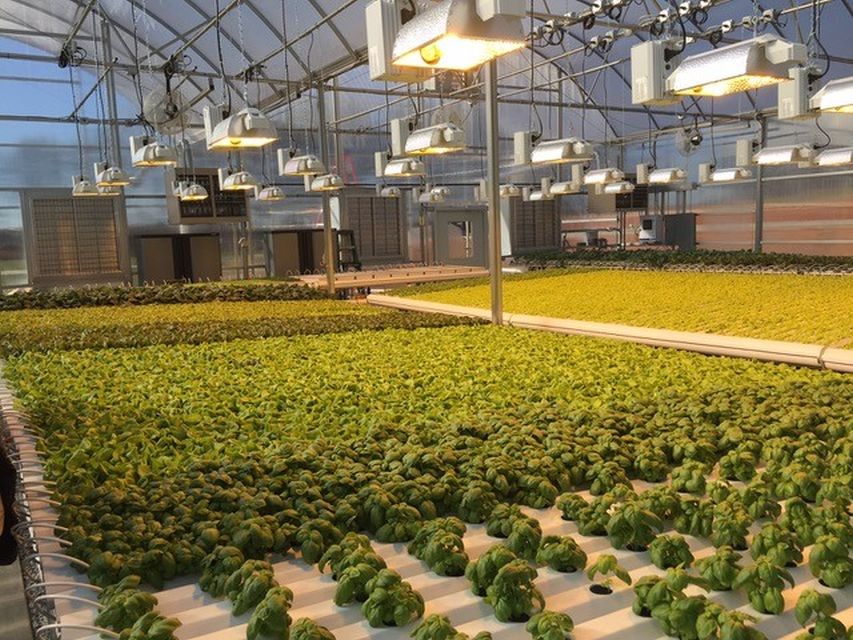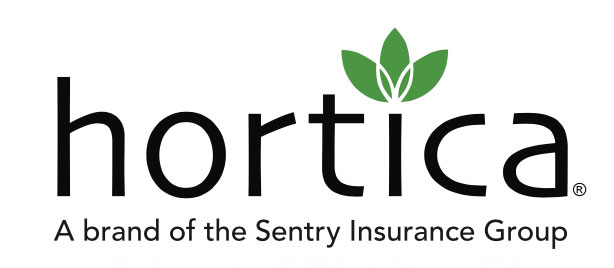Inexpensive (and Smart) Ways to Add Greenhouse Technology

A shading/thermal curtain system is visible in this multi-bay controlled-environment agriculture (CEA) facility in Connecticut. Photo: AmHydro
Looking to add some new tech to your growing operation? With options from simple lighting controllers to integrated environmental control units, and fertigation systems to computer AI, narrowing the choices can seem overwhelming.
With energy prices rising across all sectors, from natural gas and propane to electricity, increasing your operation’s energy efficiency is likely of interest. Labor issues make using technology to automate some tasks appealing, in addition to freeing up employees’ valuable time. Achieving a consistent growing environment can yield a higher value crop and increase revenue while lowering operating expenses.
Looking to technology to solve some of these issues is logical, but buyer beware. Adding new tech to your business without an end goal in mind may be throwing money at the wrong problem. Every new tool must increase your revenue or decrease your inputs. In other words, it must make you money. Tech is no different.
Save Energy, Save Money
Energy is often one of the highest costs for a commercial growing operation. Heating and cooling costs can make or break a season, and there shouldn’t be an operator who isn’t tracking them.
Assuming standard practices like maintaining current HVAC systems in top working order and sealing up leaks are performed, it may be time to consider thermal curtains, also known as thermal blankets, screens, or night curtains. Automatic systems integrated with a controller can take the labor and guesswork out of operation.
“Thermal curtains make you money,” says Joe Swartz, Vice President of AmHydro, who has been a commercial controlled-environment agriculture (CEA) grower for 37 years.
Systems rapidly pay for themselves, says Swartz, who adds that his personal experience has been in the realm of 15% to 25% savings on heating costs. Check out this University of Wisconsin Extension publication for more information on how to incorporate thermal curtains in your operation. Read more at https://is.gd/thermalcurtains.
If you are transitioning from a legacy system, integrated environmental controls can be a lower-cost option to synchronize your ventilation, humidity control, irrigation, lighting, and heating/cooling systems.
Switching over from multiple manually operated systems to a computerized controller with programmed parameters can save energy and provide a more reliable and consistent physical environment for your plants, all while saving labor and minimizing mistakes.
Upgrading an old environmental controller might also make good financial sense. According to Swartz, even lower-level environmental controllers have made significant strides forward in capability in the last five years.
Hydronic heating refers to pumping heated water, usually from a boiler, through pipes or radiators to heat a space. However, it can also be routed to apply heat at the root zone. Hydronic heating systems for greenhouses focus the heat right where it needs to be: at the plant. Systems can be designed under-bench, in-bench, or even in-ground and can be integrated into your environmental control system to fit your operation.
Under-bench can be a great addition to your operation and is entirely scalable. The heating systems provide heat to the soil and roots, and because heat rises naturally, it also heats the plants and assists with airflow.
Multiple zones can be created within the same structure. Think warmer temperatures for your tomatoes but cooler temps for your spinach and lettuce.

Sweet basil grows in an AmHydro nutrient film technique (NFT) system under supplemental lighting. Photo: AmHydro
Boost ROI with Low-Hanging Fruit
One thing that always surprises AGEYE CEO Nick Genty is the lack of integration in systems. He finds it common to visit a grower and see sensors from multiple vendors that don’t talk to each other, and some functions still running on manual control while others are fully automated.
“People think automation is Mt. Everest, all or nothing. It can be simple,” he states.
Taking a pause and investing in making your current systems work together can be labor-saving and make good financial sense.
JC Chidiac, Horticultural Engineer at CultiBio LTD, recommends looking at automation in harvesting, packaging, and sanitation. Stand-alone systems are available, and the high cost of labor means adding automation in these intensive tasks provides an excellent ROI.
Genty, who runs AGEYE, an artificial intelligence company, has a good pulse on the state-of-the-art tech being implemented by larger operations.
LiDAR (think laser mapping of plant heights and shapes) is combined with RGB and infrared sensors to develop intelligent imaging systems, giving growers real-time crop data. Integrated with airflow mapping, CO2 sensors, and other data, operators can fine-tune inputs for maximum efficiency and consistency. While seemingly far in the future, AGEYE is already installing this tech. Genty states that consistency and uniformity of the crop tell a lot about the need for improvement.
“If you’re seeing a 20% to 30% swing in production harvest to harvest, something is going wrong,” he says.
That lesson can be applied to smaller operations, as well.
When asked what he sees most often purchased and implemented by growers, Swartz didn’t hesitate to answer: lighting. Supplemental lighting for greenhouse growers or sole-source lighting for warehouse-type indoor farmers is the most common tech Swartz sees purchased.
While lighting is important, he warns of a downside: many people assume the latest lighting fad can solve all their problems, ignoring other environmental and nutritional issues.
When considering adding new equipment to your operation, it’s essential to cut through the noise. Focus on solving a particular problem or pinch point.
“Just because you can buy it doesn’t mean you should,” says Genty.
“Buy the tool that makes you money,” Swartz says.








